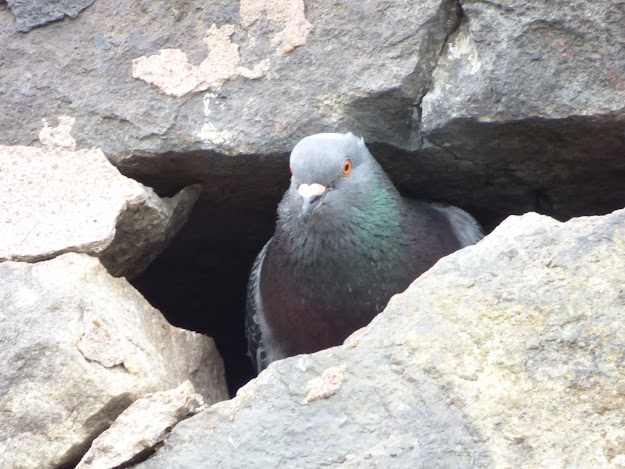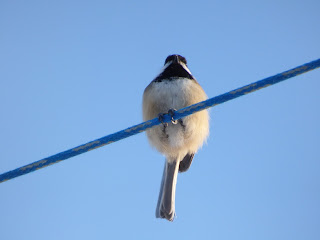The Bird of the Day today is the rock pigeon. It is also known as the rock dove and the feral pigeon. Scientifically, it is known as the Columba livia, and in Irish, it is known as Colm aille. It is native to Europe, and especially adept at living in the cities.
I spotted the birds in these pictures while hiking the Duluth Lakewalk in Duluth, Minnesota. These birds were sitting along the railroad tracks, next to the hiking trail.
There are a lot of interesting color variations association with this species. The top three pictures are of the most common color variation, and the bottom bird is much more unusual. I had to look in several field guides to find this variation, and finally located it in The Complete Guide to Birds to North America put out by National Geographic.



















































